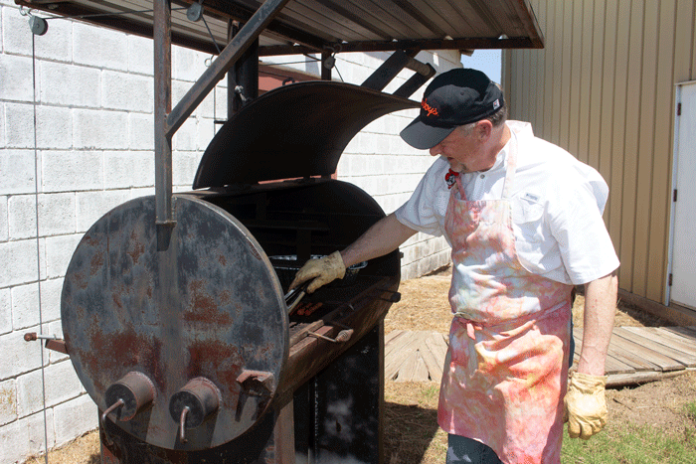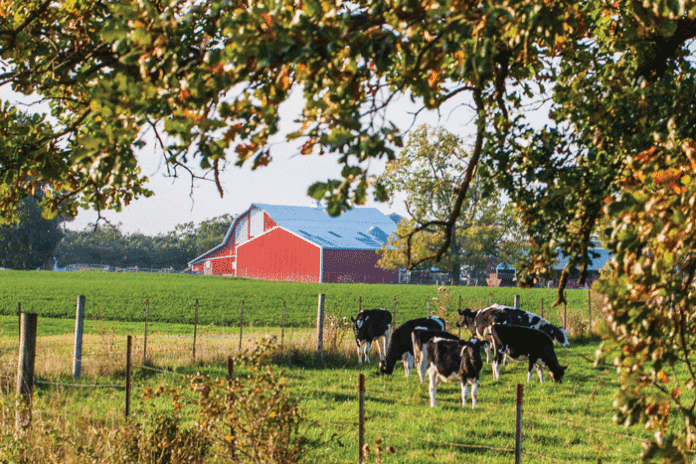The Longhorned Tick (also known as the Bush tick) (Figure 1) is an exotic tick and has been documented as a serious pest of livestock in Australia and New Zealand. Recently, this tick has been found on animals in New Jersey, Virginia, West Virginia and Arkansas. Longhorned Ticks can be found on multiple animals and is considered a three-host tick. This three-host tick is unique in that it can reproduce either sexually (male and female mating) or through parthenogenesis. The reproductive biology of this tick can lead to large populations occurring in pastures or on animals in a short period of time if left unmonitored. However, since it is a three-host tick, it will typically complete their life cycle in 6-months with all active life stages (larva, nymph, and adult stages) feeding on animals. Host associations for this tick are diverse and can infest both small birds as well as large ruminants such as cattle. Considering hosts and pasture types, these two factors will allow certain areas to be more susceptible to this tick. For instance, this tick does not move very far from available hosts when transitioning between life stages (Heath 2016). Therefore, areas that are regularly visited by cattle with vegetation that allows humidity to stay high such as wooded or tall grass areas are probably more likely to have this tick. This tick is also associated with wildlife such as deer, raccoons and opossums. A common area for ticks to be found in pastures are where these wildlife animals commonly reside such as deer trails. It is also an aggressive biter and causes a lot of stress in animals which can lead to economic impacts to beef animal performance.

Disease associations from this tick are important from the veterinary health aspect as well as the public health aspect. This tick has been identified as a competent vector of several bacterial pathogens including anaplasmosis, ehrlichiosis, spotted fever rickettsia, and Lyme disease. This tick is also associated with viruses mainly found in East Asia. However, the most likely pathogen that this tick can transmit is the protozoan pathogen that causes Theileriosis. In fact, the cattle that this tick was sampled from in Virginia tested positive for Theileria orientalis which causes bovine theileriosis which can cause high production losses and high mortality in susceptible beef animals.
Below is a comparison of ticks commonly found in Oklahoma (Fig. 2).

Of the ticks listed the most likely tick to be confused with the Longhorned tick is the Brown Dog Tick (Fig. 2F) due the similar structure of the mouthpart of these two ticks. The length of the mouthpart in Amblyomma ticks and Ixodes ticks (Fig. 2A-C) is much longer than in the Longhorned tick. The mouthparts of the American Dog Tick and Winter Tick, both of which are Dermacentor ticks, are shorter or in equal length as the basis that connects their mouthparts to their body (Fig. 2 E&F). The Longhorned tick has some characteristics that distinguish it from other ticks but only trained personnel can see these differences. If you suspect that a tick is different from other ticks seen previously then the tick can be sent to Oklahoma State University at the below address for identification. The local county extension office as well as your veterinarian can be contacted to assist in the collection. Also, when sending the tick, the best method is to place the tick into a sealable vial with 70% ethanol. The sample should include where the tick was collected (GPS coordinates or street address), type of animal or if it was collected from a person, and the date of collection. All of this will be required for identification. If a possible tick is presumed to be the Longhorned Tick then the State Veterinarian office within the Oklahoma Department of Agriculture, Food & Forestry will be notified as to the location of the positive tick sample. Plant Disease and Insect Diagnostic Laboratory
ATTN: Justin Talley
Entomology and Plant Pathology
Oklahoma State University
127 NRC
Stillwater, OK 74078
(405) 744-9961
Find out what’s happening on the Oklahoma Cooperative Extension Calendar at https://calendar.okstate.edu/oces/#/?i=2
Follow me on Facebook @ https://www.facebook.com/leland.mcdaniel
Oklahoma State University, in compliance with Title VI and VII of the Civil Rights Act of 1964, Executive Order 11246 as amended, and Title IX of the Education Amendments of 1972 (Higher Education Act), the Americans with Disabilities Act of 1990, and other federal and state laws and regulations, does not discriminate on the basis of race, color, national origin, genetic information, sex, age, sexual orientation, gender identity, religion, disability, or status as a veteran, in any of its policies, practices or procedures. This provision includes, but is not limited to admissions, employment, financial aid, and educational services. The Director of Equal Opportunity, 408 Whitehurst, OSU, Stillwater, OK 74078-1035; Phone 405-744-5371; email: eeo@okstate.edu has been designated to handle inquiries regarding non-discrimination policies. Any person who believes that discriminatory practices have been engaged in based on gender may discuss his or her concerns and file informal or formal complaints of possible violations of Title IX with OSU’s Title IX Coordinator 405-744-9154.










